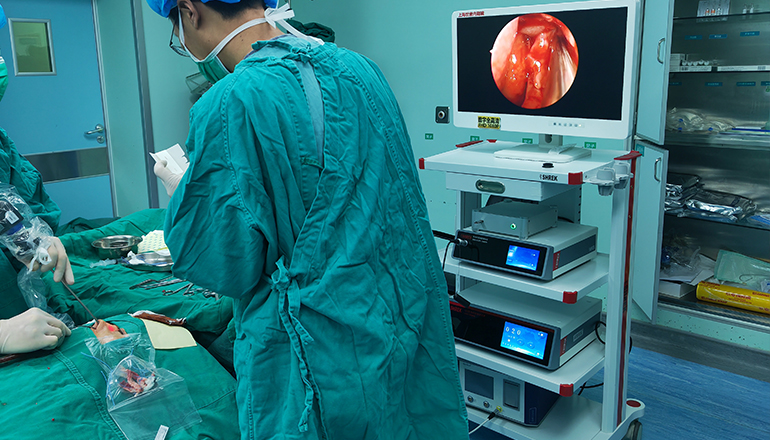- Shanghai, China
- [email protected]
- +86-21-58189111
ENT (ear, nose, and throat) endoscopic surgery involves the use of specialized equipment to visualize and treat conditions of the ear, nose, and throat. The equipment required for ENT endoscopic surgery includes the endoscope, light source, camera, monitor, and specialized instruments.
Endoscope: The endoscope is a thin, flexible tube with a light source and camera at the end. It is used to visualize the inside of the ear, nose, or throat. There are different types of endoscopes for different parts of the body, such as a nasopharyngoscope for the nose and throat or an otoscope for the ear.
Light source: The light source is a device that provides light to the endoscope to illuminate the area being examined. This allows the surgeon to see inside the body cavity clearly.
Camera: The camera is attached to the endoscope and transmits images to a monitor, allowing the surgical team to visualize the inside of the body cavity in real-time.
Monitor: The monitor displays the images captured by the camera. The surgical team can view the monitor to guide their movements during the procedure.

Specialized instruments: In addition to the endoscope, specialized instruments are required for ENT endoscopic surgery. These instruments are designed to be used with the endoscope and allow the surgeon to perform procedures such as biopsies or remove tissue.
Examples of specialized instruments include:
Forceps: These are used to grasp tissue and remove it.
Suction devices: These are used to remove fluid or debris from the surgical site.
Cutting instruments: These are used to remove tissue, such as a polyp or a tumor.
Electrocautery devices: These are used to cut and cauterize tissue.
Other equipment that may be used during ENT endoscopic surgery includes irrigation equipment, which is used to clean and flush the surgical site, and anesthesia equipment, which is used to keep the patient comfortable and still during the procedure.
ENT endoscopic surgery requires specialized equipment, including the endoscope, light source, camera, monitor, and specialized instruments. Proper maintenance and sterilization of the equipment are essential to prevent infection and ensure patient safety. It is also important that the surgical team is properly trained and experienced in the use of the equipment to ensure safe and effective surgeries.
The use of endoscopic equipment in ENT surgery has significantly improved patient outcomes by reducing the need for invasive surgical procedures. Endoscopic surgery is less traumatic, reduces scarring, and often requires less recovery time. However, as with any surgical procedure, there are risks associated with endoscopic surgery, including infection, bleeding, and damage to surrounding tissue.
It is important that the surgical team has the necessary training and experience to perform endoscopic surgery safely and effectively. The team must also be familiar with the equipment and be able to properly maintain and sterilize it to prevent infection and ensure patient safety.
In summary, endoscopic equipment is an essential part of ENT surgery, allowing surgeons to visualize and treat conditions of the ear, nose, and throat. The equipment required for ENT endoscopic surgery includes the endoscope, light source, camera, monitor, and specialized instruments. Proper maintenance and sterilization of the equipment and proper training of the surgical team are essential for safe and effective surgeries.
Leave a Comments